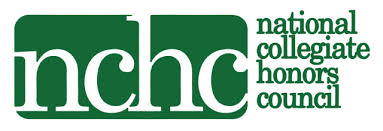Writing the Constitution
Instructor(s): Matthew Simpson
Course Description
The Constitution provides the framework for all governance in the United States. It outlines the branches of government, the separation of powers, the system of checks and balances, the overlapping authority of federal and state governments, and the rights and liberties that define our civic life together.
The debates surrounding the creation and interpretation of the Constitution make up one of the world's great bodies of political literature. From the speeches at the Constitutional Convention in 1787, to the subsequent ratifying debates in the states, to public debates over constitutional amendments, to Supreme Court decisions today, the Constitution is at the center of much of the most impressive and influential political thought and communication in U.S. history. These centuries-old questions and debates remain relevant today in issues such as:
- Is it fair to represent large- and small-population states equally in the Senate?
- Should the House of Representatives have more members?
- Who controls the U.S. military? The president or Congress?
- When can state laws contradict federal law, such as decriminalizing drugs or creating sanctuary cities?
- Who is ultimately in charge of public health (such as vaccinations and mask mandates)? The federal government, state governments, or local governments?
- When (if ever) should presidents be impeached?
- Why do members of the Electoral College rather than the voters choose the president? Does the system make sense today?
- Is partisan gerrymandering compatible with the basic ideas and ideals of the Constitution?
These questions and many others like them have provoked gripping debates that continue to shape American life. This course will begin by looking at the political context in which the Constitution was written. We will then turn to the Constitutional Convention of 1787 and the subsequent ratifying conventions, by considering the problems that the Framers tried to solve, the compromises they made, and the meaning of the document they produced. We will then turn to the amendments to the Constitution, focusing on the Bill of Rights (1-10), the Civil War Amendments (13-15), and the Progressive Era Amendments (16-19)
Our aim throughout will be to investigate the ideas and ideals of these speakers and writers, analyze the circumstances in which they were thinking and communicating, and interpret the texts that have shaped American politics at its foundations. We will use their work as the starting point for our own writing and speaking about the Constitution—joining a conversation that has been ongoing for more than two hundred years.
Texts
- Akhil Reed Amar, America’s Constitution: A Biography (Random House, 2006)
- Richard Beeman (ed.), The Penguin Guide to the United States Constitution: A Fully Annotated Declaration of Independence, U.S. Constitution and Amendments, and Selections from The Federalist Papers (Penguin, 2010)
- Carol Berkin, A Brilliant Solution, Inventing the American Constitution (Harcourt, 2002)
- Pauline Maier, Ratification: The People Debate the Constitution (Simon & Schuster, 2011)
- George Orwell, “Politics and the English Language” (1946)



Social Media
For news, information, prizes and more fun stuff follow us on our social media!
Honors College Resources